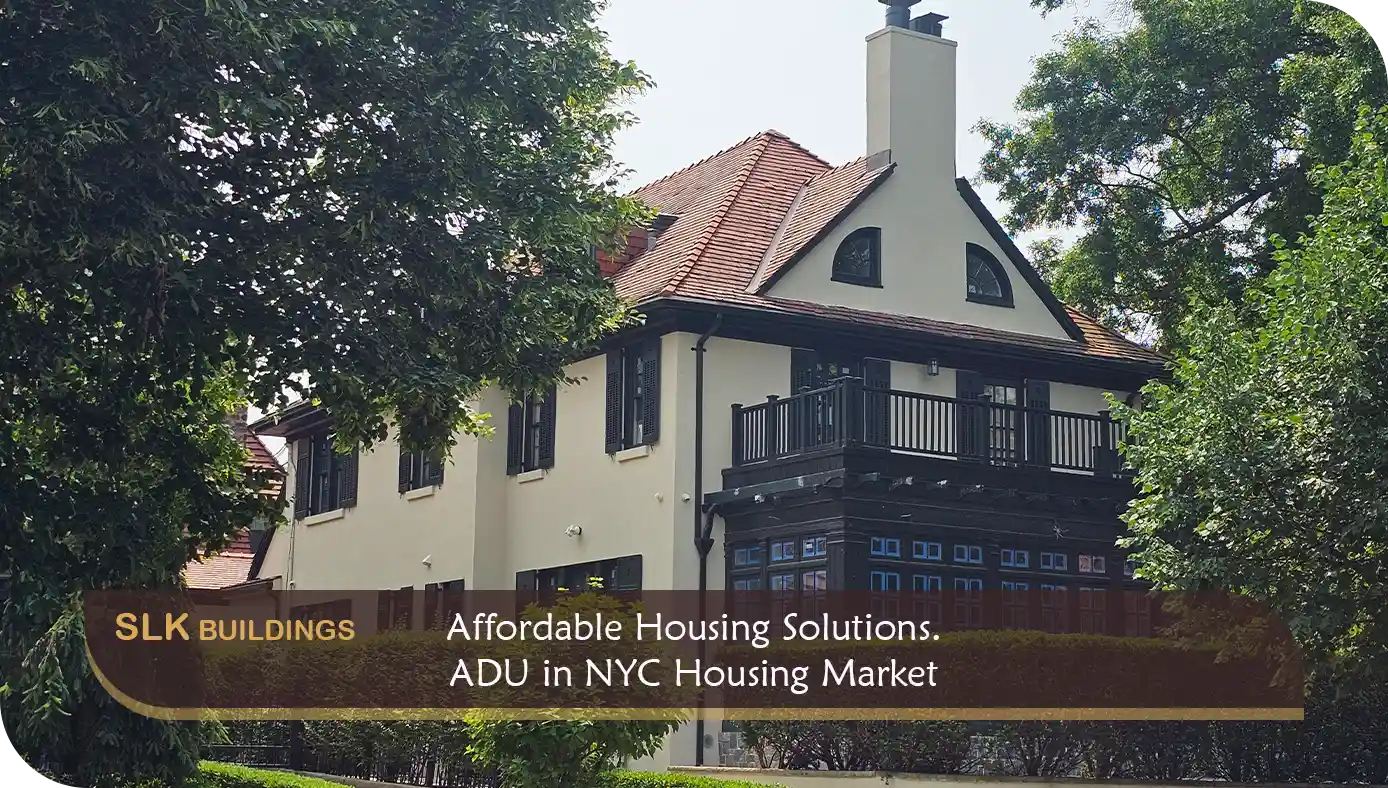Affordable Housing Solutions: ADU in NYC Housing Market

Affordable Housing Solutions: ADU in NYC Housing Market
In the bustling metropolis of New York City, where housing affordability is a perennial challenge, Accessory Dwelling Units (ADUs) are emerging as a promising solution to address the city’s housing shortage while offering affordable living options for residents. ADUs, also known as granny flats, in-law suites, or secondary units, provide additional housing units on residential properties, often through the conversion of existing structures like basements, garages, or standalone cottages. Let’s delve into how ADUs are becoming an integral part of New York City’s housing market and their role in providing affordable housing solutions.NYC
RELATED ARTICLES
- Plus One ADU
-
What is ADU Housing? A Comprehensive Guide to Accessory Dwelling Units
- Legal and Zoning Considerations of ADU Development in NYC
-
Rental Income Opportunities: ADU Development in New York City
-
Multi-generational Living: ADU as a Solution for NYC Families
-
Design Considerations for NYC ADUs: Making the Most of Limited Space
-
New York City’s ADU Regulations: What Homeowners Need to Know
-
Unlocking New Opportunities: Exploring NYC DOB’s Accessory Dwelling Units (ADUs)
Affordable Housing Solutions: ADU in NYC Housing Market
Why Choose SLK Buildings?
- Proven Track Record
- Diverse Clientele
- Integrated Services
- Client-Centric Approach
- Registered Representative
Call Us 212.888.3888
Proven Track Record: Over two decades of successful dealing with NYC Department of Buildings Rules and Regulations.
Diverse Clientele: Trusted by a broad spectrum of clients, from individual property owners, architects, engineers, attorneys, hospitality business owners, project management firms to large scale developers.
Integrated Services: A one-stop solution encompassing consultation, representation, documentation and compliance support. We manages the entire process, from determining applicability to Accessory Dwelling Unit qualification, filing your ADU application, coordinating with our Registered Architect or Professional Engineer partner, to the completion.
Client-Centric Approach: Tailored strategies that prioritized our clients’ unique needs and objectives.
Registered Representative: We are registered Filing Representative with Department of Buildings and Registered Representative with OATH (Office of Administrative Trials and Hearings) and familiar with the Rules of Practice for the OATH Hearings Divisions.
Addressing Housing Affordability
New York City’s housing market is notorious for its sky-high rents and property prices, making it challenging for many residents to find affordable housing options. ADUs present a unique opportunity to increase the city’s housing supply without the need for large-scale development projects. By leveraging underutilized space on existing residential properties, homeowners can create additional rental units that are often more affordable than traditional apartments.
Utilizing Existing Infrastructure
One of the key advantages of ADUs is their ability to make use of existing infrastructure, such as underutilized basements, garages, or accessory structures. In a densely populated city like New York, where space is at a premium, maximizing the use of existing buildings can help alleviate pressure on the housing market without the need for extensive new construction.
Diverse Housing Options
ADUs come in various forms, from converted basement apartments to standalone cottages, offering a diverse range of housing options to suit different needs and preferences. This flexibility allows homeowners to tailor ADUs to meet the demands of various demographic groups, including young professionals, students, seniors, and multi-generational families.
Supporting Aging-in-Place
ADUs can also play a vital role in supporting aging-in-place initiatives by providing seniors with the option to downsize into smaller, more manageable living spaces while remaining close to family members or caregivers. Accessible ADU designs can be adapted to accommodate the needs of elderly residents, promoting independence and quality of life as they age.
Policy Initiatives and Incentives
Recognizing the potential of ADUs to expand affordable housing options, policymakers in New York City have taken steps to promote their development. In recent years, the city has implemented zoning changes and regulatory reforms aimed at streamlining the process of creating ADUs and reducing barriers for homeowners. Additionally, financial incentives and grant programs may be available to offset the costs of ADU construction or conversion, further encouraging their adoption.
Challenges and Considerations
Despite their potential benefits, the widespread adoption of ADUs in New York City’s housing market faces several challenges. Zoning restrictions, building codes, and permitting processes can vary across neighborhoods and boroughs, complicating the development of ADUs for homeowners. Additionally, concerns related to infrastructure capacity, parking, and neighborhood character may arise, requiring careful planning and community engagement.
In the quest for affordable housing solutions, Accessory Dwelling Units offer a promising avenue for expanding housing options in New York City. By leveraging existing infrastructure, promoting diverse housing choices, and supporting aging-in-place initiatives, ADUs can contribute to a more equitable and inclusive housing market. With continued policy support and community collaboration, ADUs have the potential to play a significant role in addressing the city’s housing affordability challenges and improving the quality of life for residents across all five boroughs.
Seeking Professional Guidance
Given the intricacies of New York City’s ADU regulations, homeowners are encouraged to seek professional guidance from architects, engineers, and legal experts familiar with local zoning laws and building codes. These professionals can help navigate the regulatory landscape, ensure compliance, and streamline the permitting process.